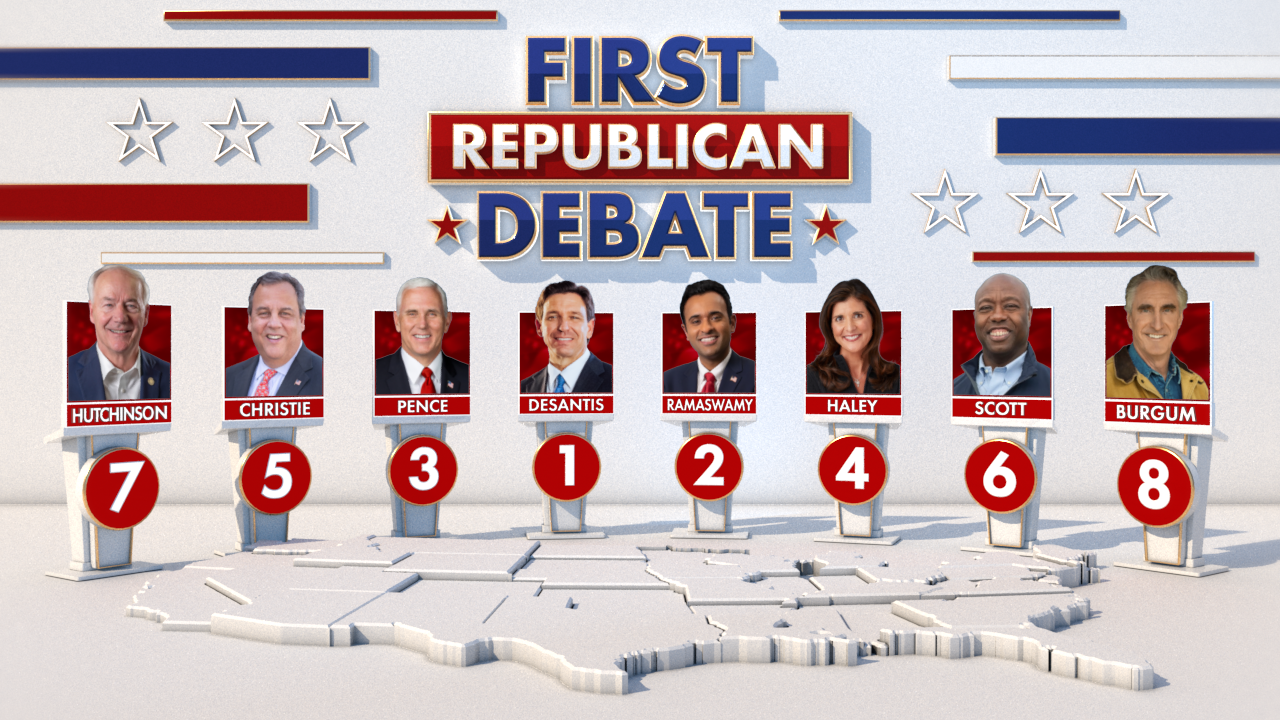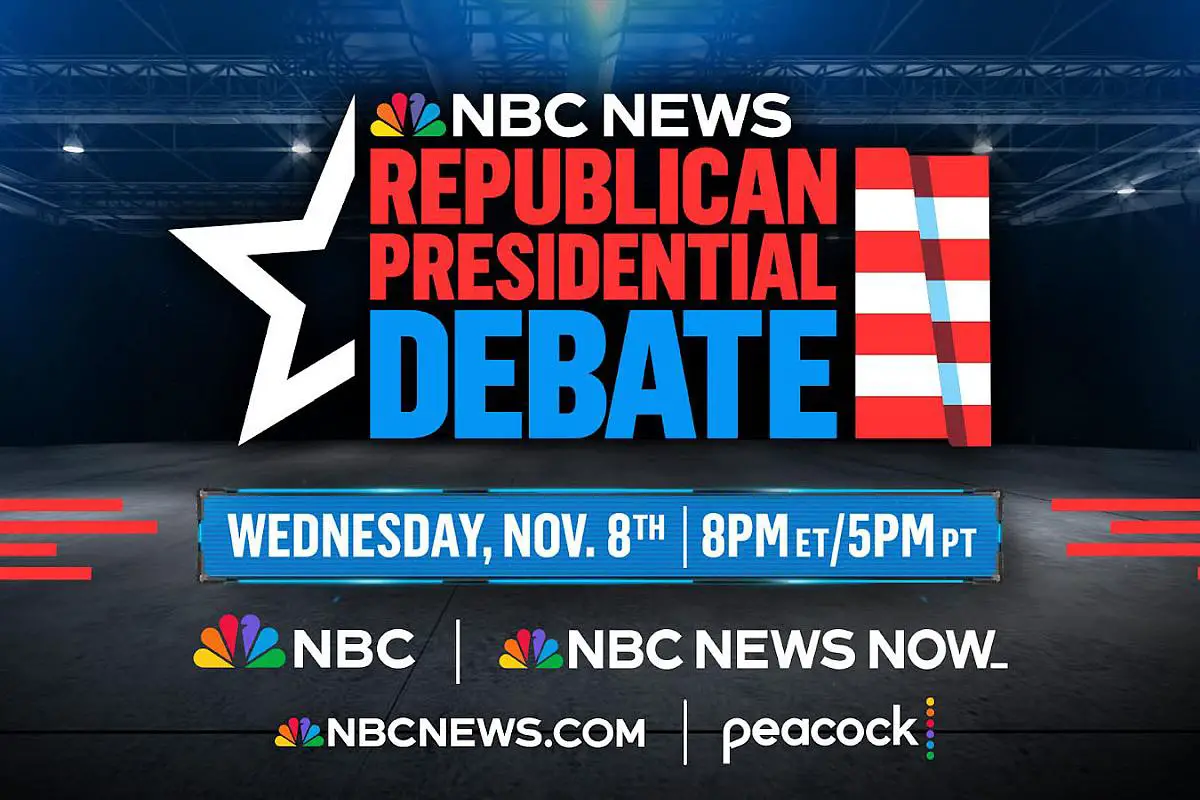Key Issues and Debates

The ABC presidential debate provided a platform for the candidates to articulate their positions on a range of critical issues facing the nation. The candidates engaged in heated exchanges, highlighting their divergent views and proposed solutions. This analysis delves into the key issues discussed, the candidates’ arguments, and the potential impact of their proposed solutions.
The Economy
The economy was a central theme of the debate, with both candidates emphasizing its importance to the well-being of the nation. Candidate A, a Democrat, focused on policies aimed at stimulating economic growth and creating jobs. They advocated for increased government spending on infrastructure, education, and renewable energy, arguing that these investments would create jobs and boost economic activity. Candidate A also proposed raising the minimum wage and expanding access to affordable healthcare, arguing that these measures would increase consumer spending and support economic growth.
Candidate B, a Republican, emphasized the importance of tax cuts and deregulation in driving economic growth. They argued that reducing taxes on businesses and individuals would stimulate investment and job creation. Candidate B also proposed rolling back environmental regulations, arguing that they stifle economic growth and job creation. They claimed that their policies would lead to a stronger economy and more jobs.
The potential impact of the candidates’ proposed solutions on the economy is a matter of debate. Economists have differing views on the effectiveness of government spending, tax cuts, and deregulation. Some argue that government spending can stimulate economic growth, while others believe that it can lead to higher deficits and inflation. Similarly, there is disagreement about the impact of tax cuts and deregulation. Some argue that they can boost economic growth, while others believe that they can lead to greater income inequality and environmental damage.
Healthcare
Healthcare was another key issue discussed during the debate. Candidate A, a Democrat, advocated for expanding access to affordable healthcare, arguing that it is a fundamental right. They proposed expanding Medicare to cover all Americans and negotiating lower drug prices. Candidate A argued that these policies would provide quality healthcare to all Americans while reducing healthcare costs.
Candidate B, a Republican, focused on reducing government involvement in healthcare. They proposed repealing the Affordable Care Act (ACA) and replacing it with a system that emphasizes individual responsibility and market competition. Candidate B argued that their policies would lower healthcare costs and improve the quality of care.
The potential impact of the candidates’ proposed solutions on healthcare is significant. Expanding access to affordable healthcare could improve the health outcomes of millions of Americans and reduce healthcare costs. However, it could also lead to higher taxes and government spending. Repealing the ACA could lead to millions of Americans losing their health insurance and could increase healthcare costs for many.
Climate Change
Climate change was a contentious issue during the debate, with the candidates expressing sharply contrasting views. Candidate A, a Democrat, acknowledged the urgency of climate change and proposed ambitious policies to address it. They advocated for a transition to clean energy, including investments in renewable energy sources and energy efficiency. Candidate A also proposed regulations to reduce greenhouse gas emissions and investing in climate adaptation measures. They argued that these policies are necessary to prevent the worst effects of climate change.
Candidate B, a Republican, expressed skepticism about the severity of climate change and the role of human activity in causing it. They opposed regulations on greenhouse gas emissions and argued that the focus should be on economic growth and energy independence. Candidate B proposed investing in fossil fuels and nuclear energy, arguing that these are the most reliable and affordable sources of energy.
The potential impact of the candidates’ proposed solutions on climate change is significant. Investing in clean energy and reducing greenhouse gas emissions could help to mitigate the effects of climate change. However, these policies could also lead to higher energy prices and job losses in the fossil fuel industry. Opposing regulations on greenhouse gas emissions could lead to increased carbon emissions and exacerbate the effects of climate change.
Immigration
Immigration was another contentious issue during the debate, with the candidates expressing sharply contrasting views on border security, legal immigration, and the status of undocumented immigrants. Candidate A, a Democrat, advocated for a pathway to citizenship for undocumented immigrants and for comprehensive immigration reform that addresses the root causes of migration. They also argued for humane treatment of immigrants and for policies that promote family reunification.
Candidate B, a Republican, emphasized the need for stricter border security and for reducing legal immigration. They also proposed building a wall along the US-Mexico border and for increased enforcement of immigration laws. Candidate B argued that their policies would protect national security and American jobs.
The potential impact of the candidates’ proposed solutions on immigration is significant. Providing a pathway to citizenship for undocumented immigrants could benefit the economy and reduce crime. However, it could also lead to increased immigration and could be seen as rewarding illegal behavior. Stricter border security and reduced legal immigration could reduce illegal immigration and protect national security. However, it could also lead to higher costs and could harm the economy.
Education, Abc presidential debate
Education was another key issue discussed during the debate, with the candidates emphasizing the importance of quality education for all Americans. Candidate A, a Democrat, advocated for increased funding for public schools and for making college more affordable. They proposed expanding access to early childhood education and for investing in teacher training. Candidate A argued that these policies would ensure that all Americans have access to quality education.
Candidate B, a Republican, emphasized the importance of school choice and for empowering parents to make decisions about their children’s education. They proposed expanding charter schools and voucher programs and for reducing federal regulations on schools. Candidate B argued that these policies would improve the quality of education and give parents more control over their children’s education.
The potential impact of the candidates’ proposed solutions on education is significant. Increasing funding for public schools could improve the quality of education for all students. However, it could also lead to higher taxes and could increase government bureaucracy. Expanding school choice could give parents more control over their children’s education and could lead to innovation in education. However, it could also lead to segregation and could undermine public schools.
Candidate Performance and Strategies: Abc Presidential Debate

The presidential debate provided a platform for candidates to showcase their communication skills, strategic approaches, and overall performance. This analysis delves into the communication styles, memorable moments, strategic choices, and effectiveness of each candidate’s performance.
Communication Styles and Delivery
The communication styles and delivery of each candidate significantly influenced their impact on the audience.
- Candidate A’s communication style was characterized by [Describe candidate A’s communication style: e.g., passionate, direct, calm, etc.]. Their delivery was [Describe candidate A’s delivery: e.g., engaging, confident, hesitant, etc.], which [Explain the impact of candidate A’s delivery: e.g., resonated with the audience, created a sense of trust, etc.].
- Candidate B’s communication style was [Describe candidate B’s communication style: e.g., analytical, persuasive, diplomatic, etc.]. Their delivery was [Describe candidate B’s delivery: e.g., measured, precise, animated, etc.], which [Explain the impact of candidate B’s delivery: e.g., conveyed a sense of competence, appealed to logic, etc.].
Memorable Moments and Key Takeaways
The debate presented several memorable moments and key takeaways that highlighted the candidates’ positions and strategies.
- Candidate A’s [Describe a specific memorable moment: e.g., response to a question, statement, etc.] resonated with the audience because [Explain why this moment was impactful: e.g., it conveyed empathy, demonstrated a strong stance, etc.]. This moment reinforced their [Explain the key takeaway: e.g., commitment to a particular issue, core value, etc.].
- Candidate B’s [Describe a specific memorable moment: e.g., interaction with another candidate, specific policy proposal, etc.] was significant because [Explain why this moment was impactful: e.g., it demonstrated their leadership qualities, presented a unique perspective, etc.]. This moment highlighted their [Explain the key takeaway: e.g., focus on economic growth, emphasis on national security, etc.].
Strategic Choices
Each candidate employed specific strategic choices to advance their agenda and connect with the audience.
- Candidate A strategically [Describe a strategic choice: e.g., focused on personal anecdotes, used humor, etc.] to [Explain the purpose of the strategic choice: e.g., establish a personal connection, appeal to a specific demographic, etc.]. This approach was [Explain the effectiveness of the strategic choice: e.g., successful in engaging the audience, effective in conveying a message, etc.].
- Candidate B strategically [Describe a strategic choice: e.g., emphasized policy details, used statistics, etc.] to [Explain the purpose of the strategic choice: e.g., present a detailed plan, appeal to voters with a specific interest, etc.]. This approach was [Explain the effectiveness of the strategic choice: e.g., convincing in presenting a plan, successful in conveying expertise, etc.].
Effectiveness of Candidate Performance
The effectiveness of each candidate’s performance can be evaluated based on their communication skills, strategic choices, and overall impact on the audience.
- Candidate A’s performance was [Describe the effectiveness of candidate A’s performance: e.g., engaging, persuasive, impactful, etc.] because [Explain the reasons for the effectiveness: e.g., their communication style resonated with the audience, their strategic choices were well-executed, etc.].
- Candidate B’s performance was [Describe the effectiveness of candidate B’s performance: e.g., informative, articulate, commanding, etc.] because [Explain the reasons for the effectiveness: e.g., their delivery was clear and concise, their policy proposals were well-defined, etc.].
The ABC presidential debate was a lively affair, with candidates tackling a wide range of issues. One key theme was the importance of strong local leadership, which brought to mind the impressive work of mayor tiffany henyard in her city.
Her focus on community engagement and economic development is a model for other leaders, and her example reminds us that impactful change can happen at all levels of government. The debate itself was a reminder that the future of our nation is shaped not just by national policies, but also by the dedication of individuals like Mayor Henyard who are making a difference in their communities.
The ABC presidential debate provided a platform for candidates to discuss crucial issues, but it also highlighted the importance of local leadership. Take, for instance, Mayor Tiffany Henyard , whose innovative approach to urban revitalization demonstrates the impact a dedicated leader can have on a community.
Ultimately, the success of national policies relies on effective implementation at the local level, and the ABC debate serves as a reminder of the vital role played by individuals like Mayor Henyard.
